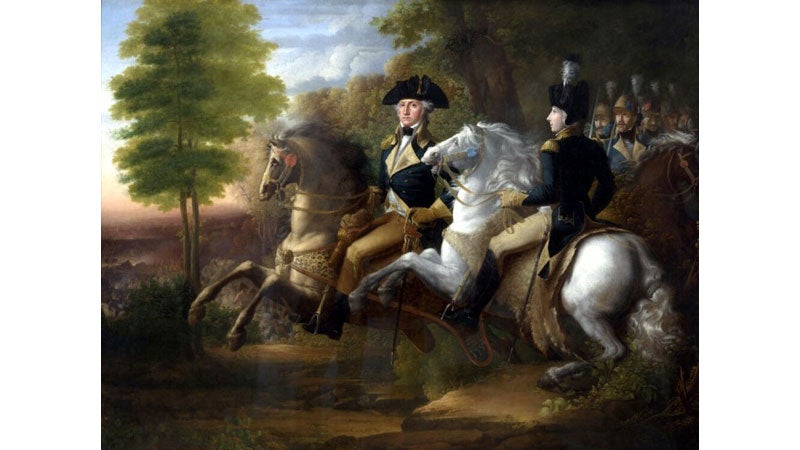COLUMN: Lafayette arrives in the colonies
Published 12:00 pm Wednesday, April 24, 2024
Editor’s Note: This is the fourth in a series of biweekly articles leading up to the bicentennial celebration.
By Frank and Gloria Womble
On April 26, 1777, Lafayette departed France on La Victoire, heading to the New World. Although seasick and bored during the two-month journey, he learned some English en route. The ship’s captain had planned to stop in the West Indies to sell his cargo, but Lafayette was so fearful of arrest that he bought the cargo to avoid docking at the islands. He landed on North Island near Georgetown, South Carolina, on June 13, 1777.
Lafayette stayed in South Carolina for two weeks as the guest of Major Benjamin Huger, a wealthy landowner, before heading to Philadelphia, where he presented himself at the Second Continental Congress. The Congress, overwhelmed with French officers who did not speak English and lacked military experience, initially rejected Lafayette’s request to join the Continental Army. In response, Lafayette offered to serve without pay. His membership in the Masons, his family connections, and a letter signed by Benjamin Franklin and Silas Deane worked in his favor and swayed Congress. The 19-year-old Lafayette was commissioned a major general on July 31, 1777, despite having only limited military training and no combat experience. That day, George Washington and Lafayette first met at City Tavern in Philadelphia. Washington asked Lafayette to “join his military family.” The childless Washington and the fatherless Lafayette bonded almost immediately, beginning a close and lifelong friendship.
Washington was impressed by the young man’s enthusiasm and inclined to think well of a fellow Mason; Lafayette was awed by Washington. When Washington took Lafayette to view his military camp, he expressed embarrassment at its state and that of the troops. Lafayette responded: “I am here to learn, not to teach.” He joined Washington’s staff as an aide-de-camp, although there was some confusion regarding his status because Congress regarded his commission as honorary. Lafayette, however, considered himself a full-fledged general officer who would be given command of American soldiers when Washington deemed him ready.
Lafayette’s first taste of combat was at the Battle of Brandywine near Chadd’s Ford, Pennsylvania, on Sept. 11, 1777. After the British outflanked the Americans, Washington sent Lafayette to join General John Sullivan. Upon his arrival, Lafayette went with the Third Pennsylvania Brigade under Brigadier General Thomas Conway and attempted to rally the unit. The British and Hessian forces continued to advance, and Lafayette was shot in the leg. During the American retreat, Lafayette rallied the troops, allowing a more orderly pullback, before being treated for his wound. In a letter to Congress after the battle, Washington cited him for “bravery and military ardor” and recommended him to command a division.
The American Friends of Lafayette is partnering with Suffolk 250 and the Constantia Chapter, Daughters of the American Revolution, to commemorate the bicentennial of Lafayette’s Farewell Tour with events in Suffolk in 2025: A memorabilia exhibit from Jan. 23 to March 1 at the Suffolk Center for the Cultural Arts; Lafayette’s arrival on Feb. 23 at the Suffolk Visitor Center/Riddick’s Folly; a banquet on Feb. 25 at the Hilton Garden Inn Suffolk Riverfront; and reception on Feb. 26 at the Washington Smith Ordinary in Historic Somerton.
——
Frank and Gloria Womble are life members of the American Friends of Lafayette. Frank is a retired Army lieutenant colonel. Gloria is the America250 chair of Constantia Chapter, Daughters of the American Revolution, in Suffolk.






